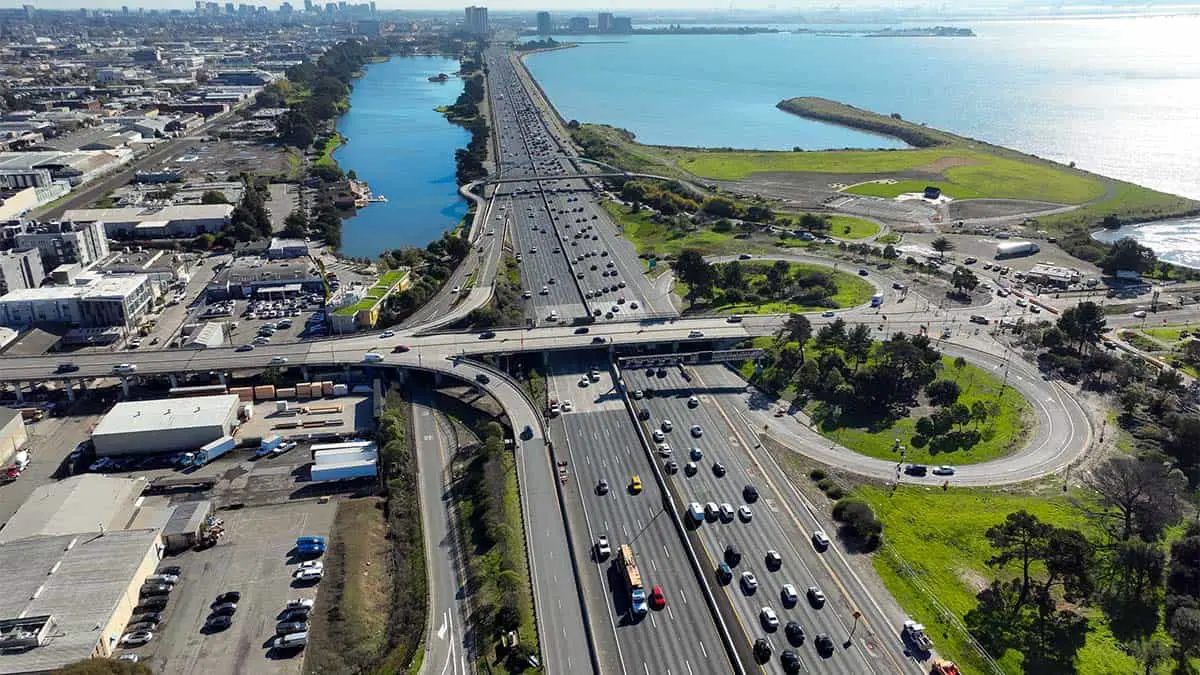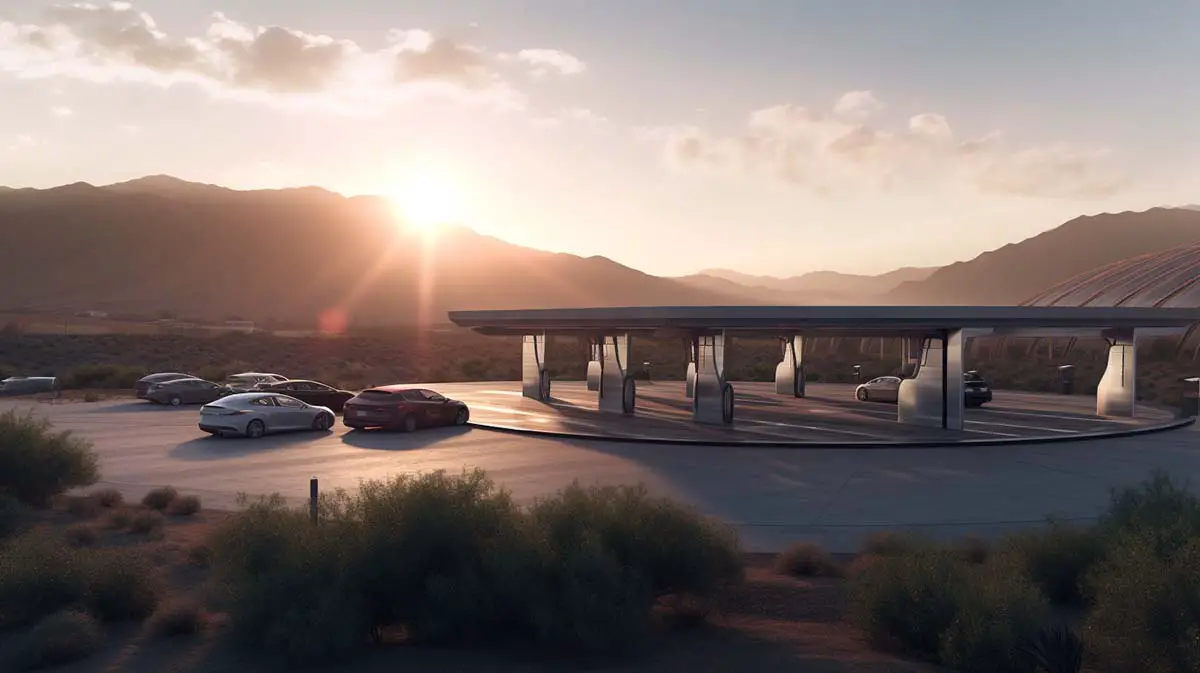California is on a mission to revolutionize its transportation sector by aiming to put 5 million zero-emission vehicles (ZEVs) on the road by 2030 and targeting 100% new ZEV sales by 2035.
As one of the leading states in addressing climate change, California’s ambitious legislation and generous funding are set to significantly reduce greenhouse gas emissions, improve air quality, and promote clean energy alternatives.
In this blog post, we’ll explore how California plans to achieve these goals, the role of the California Air Resources Board (CARB), as well as environmental benefits and opportunities for consumers that arise from this groundbreaking initiative.

Key Takeaways
- California aims to have 5 million zero-emission vehicles (ZEVs) on the road by 2030 and targets 100% new ZEV sales by 2035.
- The state has invested $2.5 billion in funding for electric vehicle charging and hydrogen refuelling infrastructure across its vast territory, as well as extending subsidies to help Californians buy zero-emission vehicles.
- Zero-emissions vehicles provide cleaner air and reduced greenhouse gas emissions, resulting in significant environmental and health benefits. They also offer cost savings on fuel and maintenance for consumers in the long run.
- Financial incentives like the Clean Cars For All program, CVRP or financing options like Clean Vehicle Assistance Program provide greater access to ZEV technology especially for low-income Californians, while encouraging automakers to increase their production of emission-free vehicles.
California’s Five Million Zero-Emission Vehicles By 2030 Goal
California aims to have 5 million zero-emission vehicles (ZEVs) on the road by 2030, and has made significant progress through investments in charging infrastructure and incentives for car buyers wanting to make the transition.
To date, $2 billion of ZEV incentives have been provided to Californians, especially in the low-income bracket.
These funds came from previous California Governor Jerry Brown’s $2.5 billion plan to boost the adoption of zero-emission cars and improve the recharging infrastructure.
California’s ambitious goal is a testament to its commitment to becoming a world leader in environmental sustainability.
California Two Years Ahead Of Schedule With 1.5 Million ZEVs Already Sold In 2023
California has been making significant progress toward its ambitious five million ZEVs goal.
In recent years, we’ve seen an increased adoption of electric vehicles (EVs) throughout the state, with popular models like Tesla’s Models Y and 3, Nissan Leaf, and Chevrolet Bolt becoming more commonplace on busy Bay Area streets and L.A. freeways.
Additionally, automakers such as Volvo have committed to phasing out internal combustion engines in favor of electric drivetrains to meet the growing demand for ZEVs.
Consequently, progress on the five million target is good. In fact, Governor Gavin Newsom announced in April 2023 that they had already surpassed their interim goal of 1.5 million ZEV sales by 2025.
This achievement puts California two years ahead of schedule.
However, despite these achievements and increasing interest in ZEVs from both consumers and manufacturers alike, there is still work to be done if California is to hit its 2030 target.

Major Investment For Charging Stations
As part of California’s ambitious Zero-Emission Vehicle Goal, the state in December 2022 allocated a massive $2.9 billion in further funding for the development of the zero emission vehicle infrastructure across its vast territory.
The largest slice of this $2.9 billion pie will go to improving the medium and heavy-duty ZEV infrastructure, but $900 million will be spent on adding 90,000 more chargers to take the total from the current 80,000 to 170,000.
By expanding the charging infrastructure, not only will it enable greater access to EV technology for all Californians but also encourage automakers like Tesla, Nissan Leaf, and Chevy Volt to increase their production of emission-free vehicles.
Moreover, such investments have proven their value as the Bay Area and L.A. freeways are bustling with more electric cars each day – thanks in part due to these comprehensive efforts at bolstering both charging networks and providing attractive incentives through rebate programs like CVRP (Clean Vehicle Rebate Project) or Clean Cars 4 All.
California Air Resources Board’s Role
The California Air Resources Board (CARB) is responsible for accelerating zero-emission vehicle (ZEV) sales to 100% by 2035 and enforcing enhanced durability and warranty requirements for ZEVs.
Accelerating To 100% New Zero-emission Vehicle Sales By 2035
I am excited to see California’s commitment to accelerating the sales of zero-emission vehicles (ZEVs) by setting a goal of 100% new ZEV sales by 2035. This bold initiative is in line with Governor Newsom’s Executive Order N-79-20 for reducing vehicle emissions and aligns with the state’s target for carbon neutrality by 2045 under AB32 statute and SB32 targets.
As electric cars become more accessible and affordable, this shift towards ZEVs will have immense benefits for our environment and health. It is estimated that this regulation could lead to a reduction of smog-causing pollution from light-duty vehicles by 25% by 2037 while reducing greenhouse gas emissions.
Overall, I believe that California’s accelerated push towards embracing the ZEV transition sets an example not only among other US states, but also actively contributes positively towards global efforts against climate change through sustainable mobility.
Enhanced Durability And Warranty Requirements
Automakers are required to deliver an increasing number of zero-emission vehicles each year, starting with 35% in 2026 and reaching 100% by 2035. But just selling electric cars is not enough; they must also be built to last.
That’s where enhanced durability and warranty requirements come in. The California Air Resources Board’s Advanced Clean Cars II rule includes a durability requirement for ZEVs: they must maintain at least 80% of their electric range for ten years or 150,000 miles by 2030.
In addition, battery packs should retain at least 75% of their original energy capacity for eight years or 100,000 miles by 2031.

Conclusion
In conclusion, California’s ambitious goal of having 5 million zero-emission vehicles on the road by 2030 is a significant step towards reducing greenhouse gas emissions and improving air quality for its residents.
The state has set a precedent in encouraging automakers to produce more ZEVs through regulations like the Advanced Clean Cars II rule, which aims to make all new light-duty vehicles sold in California zero-emission by 2035.
With a commitment to investing billions of dollars in charging infrastructure and clean mobility options for underserved communities, California is leading the way towards a cleaner and more sustainable transportation sector.
FAQs:
What is the California 5 million law for zero-emission vehicles?
The California 5 million law requires that by 2030, at least five million zero-emission vehicles are in operation on California roads.
What types of vehicles qualify as zero-emission under this law?
Zero-emission vehicles include battery-electric, hydrogen fuel cell cars, trucks and buses.
How does this law benefit the state of California?
This law benefits the state of California by reducing greenhouse gas emissions and improving air quality in heavily populated areas such as Los Angeles and San Francisco.
It also promotes a transition to clean technology jobs while driving innovation within the auto industry.
Does this mean that traditional gasoline-powered cars will be banned in California by 2030?
No, traditional gasoline-powered cars will not be banned but the implementation of cleaner vehicle technologies is being encouraged and incentivized through measures such as rebates or tax credits offered to those who choose to buy a qualifying zero- emission vehicle instead of a conventional one.
- Tesla Charger Installation Cost (Home Setups) - March 1, 2024
- Tesla Phone Key Disconnected (Troubleshooting Guide and Quick Fixes) - March 1, 2024
- Tesla FSD 12 (Explained) - March 1, 2024